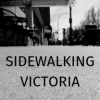 | BUILT Dockside Green, tower 1 Use: condo Address: 369 Tyee Road Municipality: Victoria Region: Urban core Storeys: 13 Condo units: (1BR, 2BR, 3BR, penthouse, 1BR + den, 2BR + den) Sales status: sold out / resales only |
Learn more about Dockside Green, tower 1 on Citified.ca

[Vic West] Dockside Green | Condos; offices; commercial
#41
![[Vic West] Dockside Green | Condos; offices; commercial: post #41](https://vibrantvictoria.ca/forum/public/style_images/master/icon_share.png)
Posted 09 November 2006 - 01:50 PM
But when Jacques was fired from VanCity and the affordability question came into the limelight the councillor had little to say. Apparently low-density, LEED, and affordability don't mix as well as the community was lead to believe.
Oh well, I'm optimistic that Dockside will apply for density increases throughout its 10-year buildout. I don't think a 2:1 density will suffice, but we'll see.
Know it all.
Citified.ca is Victoria's most comprehensive research resource for new-build homes and commercial spaces.
#42
![[Vic West] Dockside Green | Condos; offices; commercial: post #42](https://vibrantvictoria.ca/forum/public/style_images/master/icon_share.png)
Posted 09 November 2006 - 01:58 PM
Still it should have 3 or 4:1 FSR. Also the creek is a big waste when you have a path along the gorge not 30 metres away.
#43
![[Vic West] Dockside Green | Condos; offices; commercial: post #43](https://vibrantvictoria.ca/forum/public/style_images/master/icon_share.png)
Posted 09 November 2006 - 02:27 PM
All the water used for irrigation and water features will be recycled water from rainwater collected on-site, and grey water(relatively clean water, from the toilets and bath and kitcehn drains.) There will be no grass on site whatsoever. All plants used will either native or addaptive, drought tolerant plants that require minimal irrigation anyway.
Okay, well that actually sounds pretty good to me. Thanks for straightening me out :oops:
But I'm still miffed about the low density and the overall look of it!
#44
![[Vic West] Dockside Green | Condos; offices; commercial: post #44](https://vibrantvictoria.ca/forum/public/style_images/master/icon_share.png)
Posted 09 November 2006 - 04:21 PM
I just don't see how affordable housing and LEED certification should be
subsidized by EVEN higher prices when they could be funded by higher density instead. If density is not relaxed, will we eventually have to settle for less impressive building finishes b/c the developer can't afford anything else? I sure hope not.
This issue weighs heavily especially in a location where we have a unique opportunity to have something we won't regret a few yrs down the road as an example of what could have been. It really is saying something when it isn't even built and already considered to be under utilized.
Nothing against LEED Platinum, great concept but lets make the cost of housing work for more people, a variety of demographics such as young working families and large enough units that they can actually not feel shoehorned into a tiny box. With DG what we get now is either small and expensive, or larger and outrageously expensive. With higher density the ordinary "non-subsidized" buyer has to fork over more money to carry the "affordable housing component", which by the way is not that affordable at least in my books.
I'm just so tired of hearing every bleeding heart asking for more affordable housing but then not accepting the density which would make that affordability a reality.
My humble opinion is that the units could have been, with proper density, much more affordable, and the affordable housing component could have also been more affordable. How can anyone say, with a straight face, that the affordable housing @ DG is actually affordable. Can a young family afford a decent size unit w/o making $80,000/Yr Gross? And if not, why not?
Just asking some random questions out loud here: Why can't approvals of bonus density be tied into an affordable housing allotment with new project proposals? If the numbers don't work for the developer taking all the risks then we won't have real solutions on the ground.
Is it any wonder we don't have substancial rental buildings being built right
now?
Due to high cost of land, the incentive has to start with the ground rules, such as bonus density for buildings designated for rental only, and spot zoning/up zoning existing potential sites for this purpose. If such change of zoning protected/enchanced the value of that particular piece of real estate, I don't believe the existing owner of that parcel of land would have a problem with it. At least we could ask the owner for consent??
The City simply has to acknowledge that financial viability will get rental
units under construction. They basically need to figure out how to provide
enough incentive to get the ball rolling!
Simply demanding an affordability component as part of proposals without any bonussing actually hurts the value of the underlying real estate because the developer will not take a hit on his margin...so the landowner has to take the blow. Same with the buyer of a new unit...less supply (Ie: less density) equals higher price, and less units to share potential efficiencies also equals higher cost per unit.
As many of you know density also dictates potential for better and more
sophisticated design, and quality and type of materials used in construction making for something more attractive for all of us to look at.
I am of a humble mind that substantial increase in housing stock will have a cost affect at every level of housing in the market place, weather renting or for purchase. It just blows me away that this fact is not commonly acknowledged by the people who are crying for real solutions.
People have to get over the fact that developers are not in the charity
business. They are in the risk/profit business. Correctly managed everyone can win, profits for developers taking enormous financial risks, lower housing cost for the public at large, improved quality of life in the region, better design and quality of construction, larger and more affordable units as a realistic alternative to a sfd home in the burbs. I just don't get why this has to be so difficult.
Great website by the way. I am constantly amazed how many people once they begin to think about these things are of the opinion that the City needs to be more progessive. Most people think this city really could be something much better/liveable.
So "Thanks!" to everyone for sharing some ideas which would be otherwise so difficult to get out for public discussion through the old guard filters existing in the local media. And sorry for the rant
#45
![[Vic West] Dockside Green | Condos; offices; commercial: post #45](https://vibrantvictoria.ca/forum/public/style_images/master/icon_share.png)
Posted 09 November 2006 - 06:18 PM
#46
![[Vic West] Dockside Green | Condos; offices; commercial: post #46](https://vibrantvictoria.ca/forum/public/style_images/master/icon_share.png)
Posted 09 November 2006 - 08:33 PM
The density for the indivitual buildings is higher. Although I'm not sure off-hand what they are for each. I'll find out though...
#47
![[Vic West] Dockside Green | Condos; offices; commercial: post #47](https://vibrantvictoria.ca/forum/public/style_images/master/icon_share.png)
Posted 09 November 2006 - 08:48 PM
More concerning to me now is this:

Is it just me or are the buildings along the sidewalk too far from the sidewalk? It all looks very suburban and out of place. And is it just me or do these buildings have their backs turned to the sidewalk?
I think this is something the Upper Harbour Place buildings got right and I hope Dockside Green gets it right, too. But this picture worries me a bit. Although I realize this is a fairly crude rendering from way back.
#48
![[Vic West] Dockside Green | Condos; offices; commercial: post #48](https://vibrantvictoria.ca/forum/public/style_images/master/icon_share.png)
Posted 09 November 2006 - 10:47 PM
#49
![[Vic West] Dockside Green | Condos; offices; commercial: post #49](https://vibrantvictoria.ca/forum/public/style_images/master/icon_share.png)
Posted 10 November 2006 - 06:49 AM
#50
![[Vic West] Dockside Green | Condos; offices; commercial: post #50](https://vibrantvictoria.ca/forum/public/style_images/master/icon_share.png)
Posted 10 November 2006 - 08:20 AM
Know it all.
Citified.ca is Victoria's most comprehensive research resource for new-build homes and commercial spaces.
#51
![[Vic West] Dockside Green | Condos; offices; commercial: post #51](https://vibrantvictoria.ca/forum/public/style_images/master/icon_share.png)
Posted 10 November 2006 - 02:16 PM
Oscar Wilde (1854 - 1900), The Picture of Dorian Gray, 1891
#52
![[Vic West] Dockside Green | Condos; offices; commercial: post #52](https://vibrantvictoria.ca/forum/public/style_images/master/icon_share.png)
Posted 10 November 2006 - 02:20 PM
-City of Victoria website, 2009
#53
![[Vic West] Dockside Green | Condos; offices; commercial: post #53](https://vibrantvictoria.ca/forum/public/style_images/master/icon_share.png)
Posted 10 November 2006 - 03:20 PM
#54
![[Vic West] Dockside Green | Condos; offices; commercial: post #54](https://vibrantvictoria.ca/forum/public/style_images/master/icon_share.png)
Posted 10 November 2006 - 03:45 PM
Know it all.
Citified.ca is Victoria's most comprehensive research resource for new-build homes and commercial spaces.
#55
![[Vic West] Dockside Green | Condos; offices; commercial: post #55](https://vibrantvictoria.ca/forum/public/style_images/master/icon_share.png)
Posted 10 November 2006 - 03:57 PM
Oscar Wilde (1854 - 1900), The Picture of Dorian Gray, 1891
#56
![[Vic West] Dockside Green | Condos; offices; commercial: post #56](https://vibrantvictoria.ca/forum/public/style_images/master/icon_share.png)
Posted 10 November 2006 - 04:50 PM
#57
![[Vic West] Dockside Green | Condos; offices; commercial: post #57](https://vibrantvictoria.ca/forum/public/style_images/master/icon_share.png)
Posted 10 November 2006 - 05:10 PM
Oscar Wilde (1854 - 1900), The Picture of Dorian Gray, 1891
#58
![[Vic West] Dockside Green | Condos; offices; commercial: post #58](https://vibrantvictoria.ca/forum/public/style_images/master/icon_share.png)
Posted 10 November 2006 - 06:07 PM
-City of Victoria website, 2009
#59
![[Vic West] Dockside Green | Condos; offices; commercial: post #59](https://vibrantvictoria.ca/forum/public/style_images/master/icon_share.png)
Posted 10 November 2006 - 09:32 PM
I heard someone say the London Drugs mall on Yates is built on a raft.
It may be, but the apartments behind it are on piles that go down very, very deep. The piledriving just about drove me batty....
#60
![[Vic West] Dockside Green | Condos; offices; commercial: post #60](https://vibrantvictoria.ca/forum/public/style_images/master/icon_share.png)
Posted 11 November 2006 - 10:18 AM
"Although the glass and steel superstructure is perhap's the Crystal's most obvious and outstanding feature, a little-known but ingenious aspect of the design devised by James is the use of a large concrete pad for the foundation. Faced with the problem of erecting the building on the soft reclaimed bog behind the Empress Hotel, he cleverly adopted the unusual expedient of using a gigantic concrete raft on which to "float" the centre, instead of sinking pilings to the rock foundation some forty feet below the surface. This idea proved to be highly successful in compensating for the unknown structural stresses and in carrying the combined weight of the building and 232,000 gallons of water required to fill the pool. Lying only a few inches below the surface of the ground, the slab is two feet six inches thick and is reinforced top and bottom with large steel rods. Today settlement is marginal with the deep end slightly below grade and the shallow end above."
p84, "The Crystal Gardens West Coast Pleasure Palace"
With reminiscences by Pierre Burton & over 200 illustrations
1977, The Crystal Gardens Preservation Society
Use the page links at the lower-left to go to the next page to read additional posts.
1 user(s) are reading this topic
0 members, 1 guests, 0 anonymous users













